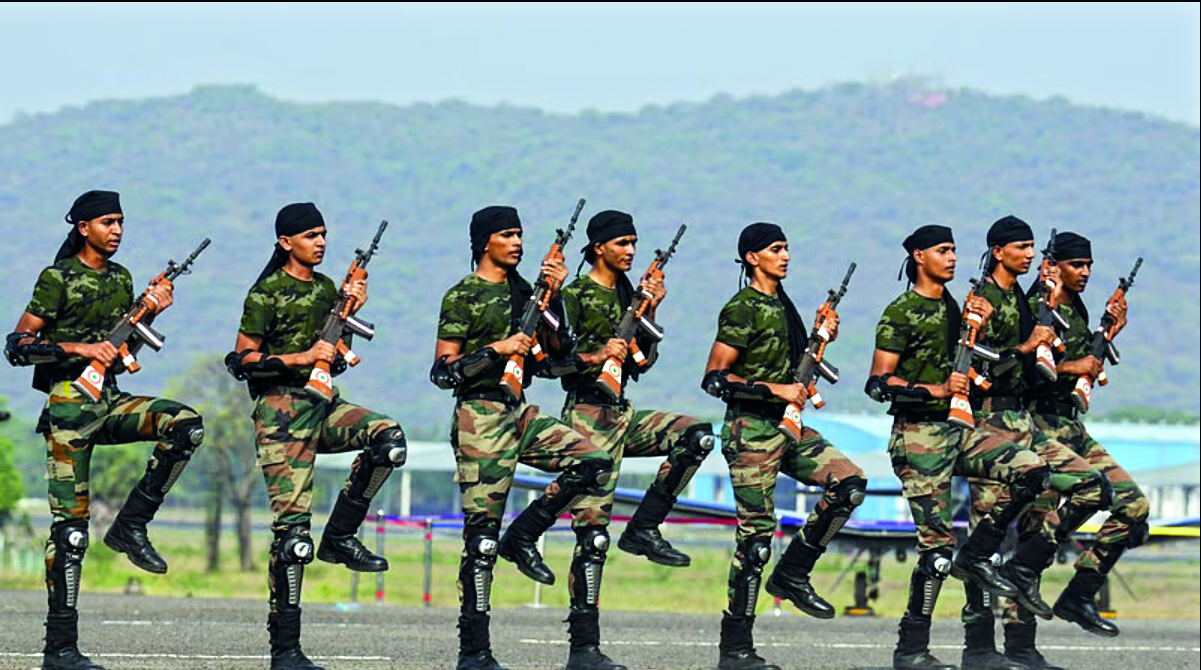Soldiering under Shadows?
Operation Sindoor’s battlefield tragedy, resulting in the sacrifice of certain Agniveers, has ignited a national reckoning over the Agnipath scheme, which is a bold but uncertain military reform whose promise of youthful transformation ostensibly stands at odds with the notions of institutional experience, expertise and camaraderie

The recent military conflict along the India-Pakistan border—Operation Sindoor—has again sparked a storm regarding the Agnipath scheme, a recruitment policy many describe as revolutionary and others view as regressive. The reported killing of three Agniveers, including 22-year-old Akashdeep Singh, during the operation has hung a dark shadow over the government’s ambitious military transformation. Singh’s family’s demand for martyr status and full military honours—a status withheld under existing Agnipath guidelines—has become a lightning rod, inviting public outrage and compelling a re-evaluation of the scheme’s ethical, operational, and strategic dimensions. Commenced in June 2022, the Agnipath program created a tectonic shift in India’s strategy of appointing personnel under officer rank (PBOR) in the Army, Navy, and Air Force. Branded as a youth-oriented overhaul to revitalise the military, the program aims to reduce the average age of military personnel by four to five years. At the heart is a four-year model of engagement, in which recruits—here called Agniveers—have a short-term service, with only a quarter being kept back for a permanent position. The others are released with a retrenchment package of Rs 11.71 lakh and a skill certificate. Although the government contends that this model will produce a leaner, fitter, and more technologically attuned force, its divergence from the traditional 19–30 year service tenure has triggered alarm among defence specialists, veterans, and civil society.
On initial consideration, the logic behind the scheme seems valid. A younger force should in theory mean better physical performance, higher flexibility, and lower pension expenditure. The policy is consistent with the proposals the Kargil Review Committee (1999) and the Group of Ministers Report (2001) made, both of which advocated a “young and fit” army. It is important to point out that the two reports had suggested a minimum stay of seven to ten years—almost double the period the Agnipath scheme suggests for the majority of recruits, recent reports indicated on the basis of the parliamentary committees’ reports. This sceptical shift has left numerous wondering if the scheme values fiscal expediency over operational richness. One of the most vocal of concerns was the risk of losing institutional experience, the legislative reports went on to add. Military efficiency is not merely a product of youth but of experience—labouredly gained through years of training, field deployment, and comradeship under fire. With 75 per cent of Agniveers leaving after four years, the military may lose precious experience in domains as varied as artillery warfare, logistics coordination, and battlefield communications. Members of Parliament and veterans contend that operational cohesion, a pillar of success on the battlefield, cannot be established—or recreated—in four-year increments. No less critical is the matter of training effectiveness. In a military environment more and more dependent on complex technology, unmanned systems, and on-line analysis of real-time data, is four years enough to train experts in aviation mechanics, cyber warfare, or naval combat? Concerns are raised that the shorter tenure will produce half-trained soldiers—soldiers educated for peace, not war. The Army’s internal survey in 2023–24 also allegedly raised red flags over Agniveers’ morale, highlighting once again the psychological and emotional cost of having a career path that remains indefinite. Socio-economically, the scheme provides a mixed basket of possibilities. While the Rs 11.71 lakh payment and skill certification can provide a soft landing; the broader issue remains one of employment. In an employment market filled with degree graduates and vocationally qualified applicants, will four years of service in the armed forces be regarded as an asset or a diversion? The spectre of returning young veterans to civilian life without definite economic options hangs heavy, particularly over the background of increasing youth unemployment. The likely disillusionment of thousands of trained but under-employed Agniveers can generate social unrest and negate the very demographic dividend that the policy seeks to leverage.
There are examples of short-term conscription models all over the world. Nations such as Israel have shown how quick training and a robust reserve army can maintain a high-readiness defence posture. Their model, however, rests within a highly militarised society and is supported by universal compulsory service. Conversely, countries like the United States and the United Kingdom focus on longer service durations to develop strong specialisation and leadership pipelines. India’s Agnipath model, where it integrates short-term enlistment with selective long-term retention, is an innovative experiment—and one with an untested template. With the nation facing an uncertain geopolitical environment of border conflicts, cross-border terrorism, and hybrid warfare, the experiment comes with high stakes. The administration has to tread carefully between innovation and caution. There is room for policy adjustment: raising the retention quota, improving post-service placement schemes through industry collaboration, and implementing phased launch with interim reviews. These measures could reduce experience gaps while maintaining the scheme’s youth-oriented character. Finally, the Agnipath scheme is not just a recruitment policy—it’s a test of India’s strategic vision. Its vision of a dynamic, modern force cannot come at the expense of battle-readiness, morale, or national security. The recent tragedy in Operation Sindoor is a grim reminder that military reforms need to be based on both vision and realism. As India faces future challenges, the test of Agnipath will not be in recruiting figures or cost savings but whether it is successful in shaping future warriors—disciplined, capable, and respected in and out of uniform.
Views expressed are personal



